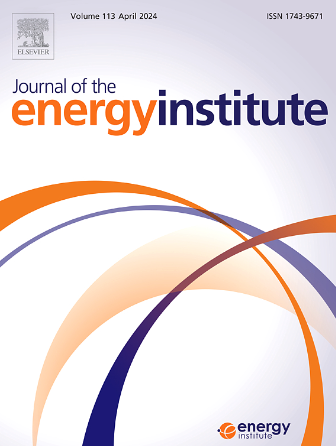Evaluate the effect of different butanol isomers on engine exhaust soot particles
IF 5.6
2区 工程技术
Q2 ENERGY & FUELS
引用次数: 0
Abstract
The chemical properties of soot particles are correlate with the catalytic regeneration efficiency of DPF. The surface chemistry of soot particles generated from the combustion of oxygenated fuels merits focused investigation, especially considering that the particle chemistry among isomer fuels remains insufficiently characterized. In this study, the chemical properties and oxidative activity of soot particles from different butanol isomers were analysed by FT-IR, XPS and TGA. The results indicated that, compared with D100, the O/C ratio of oxygenated fuel particles increased by approximately 159–358 % under 1.2 MPa load, whereas the difference was not significant at 0.6 MPa load. The content of oxygenated functional groups on particle surface increased with the load increase. When the load was increased to 1.2 MPa, the C-O (aliphatics) groups in D100 and TB50 particles were converted to C=O groups, while the corresponding groups in other fuel particles were converted mainly to C-O (aromatics) groups. Moreover, IB50 exhibited the smallest sp3/sp2 ratio (0.15 and 0.22 respectively), indicating a low degree of carbon layer disorder, fewer surface defects, and a lower content of aliphatic/oxygenated functional groups, which consequently led to the highest Ea. Linear analysis revealed a high linear correlation between the O/C ratio and Ea. For instance, NB50 had a high O/C ratio (0.3 and 0.62 respectively), resulting in a lower Ea and higher oxidative activity. Furthermore, changes in engine load altered the particle structure. Some functional groups showed little or no linear relationship with the oxidative activity of soot particles at high loads.
评价不同丁醇异构体对发动机尾气烟尘颗粒的影响
烟尘颗粒的化学性质与DPF的催化再生效率有关。含氧燃料燃烧产生的烟尘颗粒的表面化学特性值得重点研究,特别是考虑到异构体燃料之间的颗粒化学特性仍然不够充分。采用红外光谱(FT-IR)、XPS和热重分析仪(TGA)对不同丁醇异构体烟灰颗粒的化学性质和氧化活性进行了分析。结果表明,与D100相比,在1.2 MPa负荷下,含氧燃料颗粒的O/C比提高了约159 ~ 358%,而在0.6 MPa负荷下差异不显著。颗粒表面含氧官能团的含量随着负载的增加而增加。当负荷增加到1.2 MPa时,D100和TB50颗粒中的C-O(脂肪族)基团转化为C=O基团,而其他燃料颗粒中的相应基团主要转化为C-O(芳烃)基团。此外,IB50的sp3/sp2比值最小(分别为0.15和0.22),表明其碳层无序程度低,表面缺陷少,脂肪族/含氧官能团含量较低,因此Ea最高。线性分析表明,O/C比值与Ea呈高度线性相关,如NB50的O/C比值较高(分别为0.3和0.62),因此Ea较低,氧化活性较高。此外,发动机负荷的变化改变了颗粒结构。一些官能团在高负荷下与烟灰颗粒的氧化活性几乎没有线性关系。
本文章由计算机程序翻译,如有差异,请以英文原文为准。
求助全文
约1分钟内获得全文
求助全文
来源期刊

Journal of The Energy Institute
工程技术-能源与燃料
CiteScore
10.60
自引率
5.30%
发文量
166
审稿时长
16 days
期刊介绍:
The Journal of the Energy Institute provides peer reviewed coverage of original high quality research on energy, engineering and technology.The coverage is broad and the main areas of interest include:
Combustion engineering and associated technologies; process heating; power generation; engines and propulsion; emissions and environmental pollution control; clean coal technologies; carbon abatement technologies
Emissions and environmental pollution control; safety and hazards;
Clean coal technologies; carbon abatement technologies, including carbon capture and storage, CCS;
Petroleum engineering and fuel quality, including storage and transport
Alternative energy sources; biomass utilisation and biomass conversion technologies; energy from waste, incineration and recycling
Energy conversion, energy recovery and energy efficiency; space heating, fuel cells, heat pumps and cooling systems
Energy storage
The journal''s coverage reflects changes in energy technology that result from the transition to more efficient energy production and end use together with reduced carbon emission.
 求助内容:
求助内容: 应助结果提醒方式:
应助结果提醒方式:


